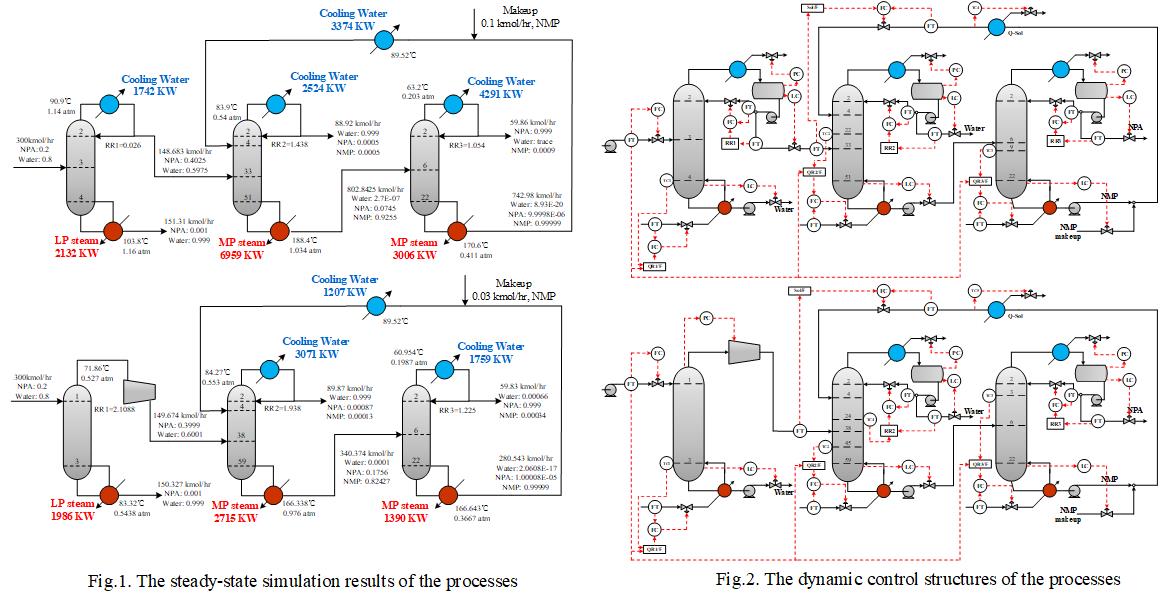2023 AIChE Annual Meeting
(337cl) Dynamics and Control of Intensified Extractive Distillation with Preconcentration: A Case Study of Separating N-Propanol-Water with Minimum-Boiling Azeotrope
Authors
Chao Liu - Presenter, Southeast University
Quanling Zhang, Institute of Intelligent Manufacturing, Nanjing Tech University
Extractive distillation (ED) is an important separation method in chemical engineering and becomes more and more widely applied in industry due to its low energy consumption. A case study of intensified ED with preconcentration investigating the separation of n-propanol-water using N-methyl-2-pyrrolidone as a heavy entrainer is developed. A preconcentration distillation column (PDC) can be added before the extractive distillation column (EDC) when the feed mixtures do not meet the conditions for the formation of azeotropes. However, the conventional three column configurations consumed too much energy, which runs counter to the current trend of energy conservation and emissions reduction. It is imperative for research scholars to combine conventional distillations with process intensification technologies to reduce energy waste. Since the reflux ratio and stage number of PDC are relatively small, the rectifying section and associated condenser in PDC could be eliminated for more economical benefits. Inspired by this point, we innovatively reformed the conventional PDC to a stripping column. An additional compressor had been used to compensate pressure drops in the pipeline. The modified three-column configurations achieved 14.4% reduction in total annual cost (TAC) and 17.9% reduction in CO2 emissions as compared to the basic design. To maintain the desired product purity, robust plantwide control structures based on proportional-integral feedback controllers were developed to tackle ±20% throughout and feed composition disturbances. Without any composition controller, the proposed control structures obtained effective anti-interference ability using simply temperature controllers. The dynamic performance of the basic design and the modified three-column configurations show that the developed control structures can successfully realize robust dynamic controllability. The steady-state simulation results of the processes and the dynamic control structures are presented as follows.
Research Interests: I have a fascination with the separation and purification areas, especially in heat-integrated pressure-swing distillation and divided-wall extractive distillation. Process integration and process intensification technologies have transformed conventional distillation processes into more economical ones magically, and I am attracted by the study of dynamic control processes. 
